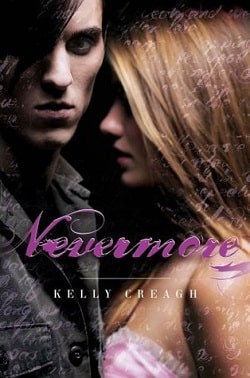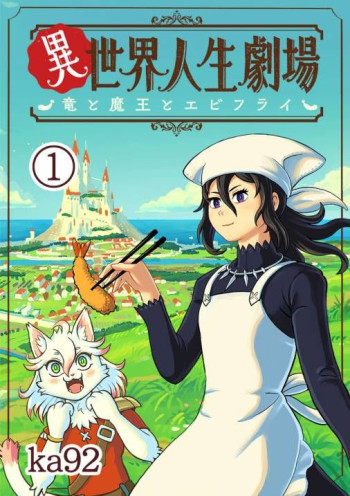In Nevermore, the first installment of Kelly Creagh's captivating series, readers are introduced to a world where the boundaries between reality and the dreamscape blur, drawing them into a rich tapestry woven with themes of love, fear, and the power of words. The story centers around Isobel Lanley, a seemingly typical high school cheerleader, who finds herself reluctantly paired with the enigmatic and brooding Varen Nethers for an English project. This unlikely partnership sets the stage for a journey that transcends the mundane and delves into the haunting realms inspired by the works of Edgar Allan Poe.
From the outset, Creagh expertly establishes the contrasting personalities of Isobel and Varen. Isobel is portrayed as a popular girl, accustomed to the social dynamics of high school life, while Varen is depicted as an outsider, a boy shrouded in mystery and darkness. This dichotomy serves as a powerful narrative device, allowing readers to explore the complexities of identity and the often superficial nature of high school hierarchies. As Isobel navigates her feelings of discomfort and disdain toward Varen, the author skillfully peels back the layers of both characters, revealing their vulnerabilities and the reasons behind their initial animosity.
One of the most compelling aspects of Nevermore is its exploration of the theme of transformation. Isobel's journey is not just about falling in love with Varen; it is also about her awakening to the deeper, more profound aspects of life that she had previously overlooked. As she becomes increasingly drawn to Varen's world—one filled with the haunting beauty of Poe's poetry and the shadows of his nightmares—Isobel begins to question her own identity and the choices she has made. This theme resonates with readers, particularly those who have experienced the tumultuous nature of adolescence, where self-discovery often comes hand-in-hand with the pain of growing up.
Varen, on the other hand, is a character steeped in darkness, embodying the tortured artist archetype. His journal, filled with strange writings and illustrations, serves as a portal into his psyche, revealing the struggles he faces with his own demons. Creagh's portrayal of Varen is both haunting and poignant, as he grapples with the shadows that threaten to consume him. The depth of his character is further enhanced by the way Isobel's presence begins to illuminate the darkness in his life, showcasing the transformative power of love and connection.
The interplay between dreams and reality is another significant theme in Nevermore. As Isobel delves deeper into Varen's world, she discovers that dreams hold a power that can shape reality in unexpected ways. This concept is beautifully illustrated through the vivid imagery and atmospheric writing that Creagh employs throughout the novel. The dream sequences are not merely fantastical escapades; they are laden with symbolism and meaning, reflecting the characters' inner turmoil and desires. This exploration of the subconscious adds a layer of complexity to the narrative, inviting readers to ponder the nature of their own dreams and fears.
Moreover, the influence of Edgar Allan Poe is palpable throughout the book, serving as both a thematic and stylistic anchor. Creagh pays homage to Poe's works, weaving elements of his stories into the fabric of Isobel and Varen's journey. This intertextuality enriches the reading experience, allowing fans of Poe to appreciate the clever nods and references while also introducing new readers to the haunting beauty of his literature. The incorporation of Poe's themes of death, madness, and the macabre adds a chilling undertone to the story, enhancing its overall impact.
As the plot unfolds, the stakes rise, and Isobel's determination to save Varen from the clutches of his nightmares becomes increasingly urgent. The tension builds as she confronts not only the external forces that threaten their connection but also the internal struggles that both characters must face. This sense of urgency propels the narrative forward, keeping readers on the edge of their seats as they root for Isobel and Varen to overcome the obstacles in their path.
In terms of character development, Creagh excels in crafting a believable and relatable arc for Isobel. Her evolution from a superficial cheerleader to a young woman who embraces her individuality and confronts her fears is both inspiring and realistic. Varen's character, while initially enigmatic, gradually reveals layers of complexity that make him a compelling figure. Their relationship, fraught with tension and misunderstandings, is portrayed with authenticity, capturing the essence of young love in all its messy glory.
Overall, Nevermore is a beautifully written and intricately plotted novel that explores the depths of the human experience through the lens of fantasy and horror. Kelly Creagh's ability to blend elements of romance, psychological thriller, and literary homage creates a unique reading experience that resonates with audiences of all ages. The themes of love, identity, and the power of words are woven seamlessly into the narrative, leaving readers with much to ponder long after they turn the final page.
For those who enjoy stories that challenge the boundaries of reality and delve into the complexities of the human psyche, Nevermore is a must-read. It stands alongside other young adult novels that explore similar themes, such as The Raven Boys by Maggie Stiefvater and Beautiful Disaster by Jamie McGuire, yet it carves out its own distinct identity through its rich literary references and atmospheric storytelling. Kelly Creagh has crafted a hauntingly beautiful tale that will linger in the minds of readers, inviting them to explore the shadows of their own dreams.
























Reviews 0
Post a Reviews: